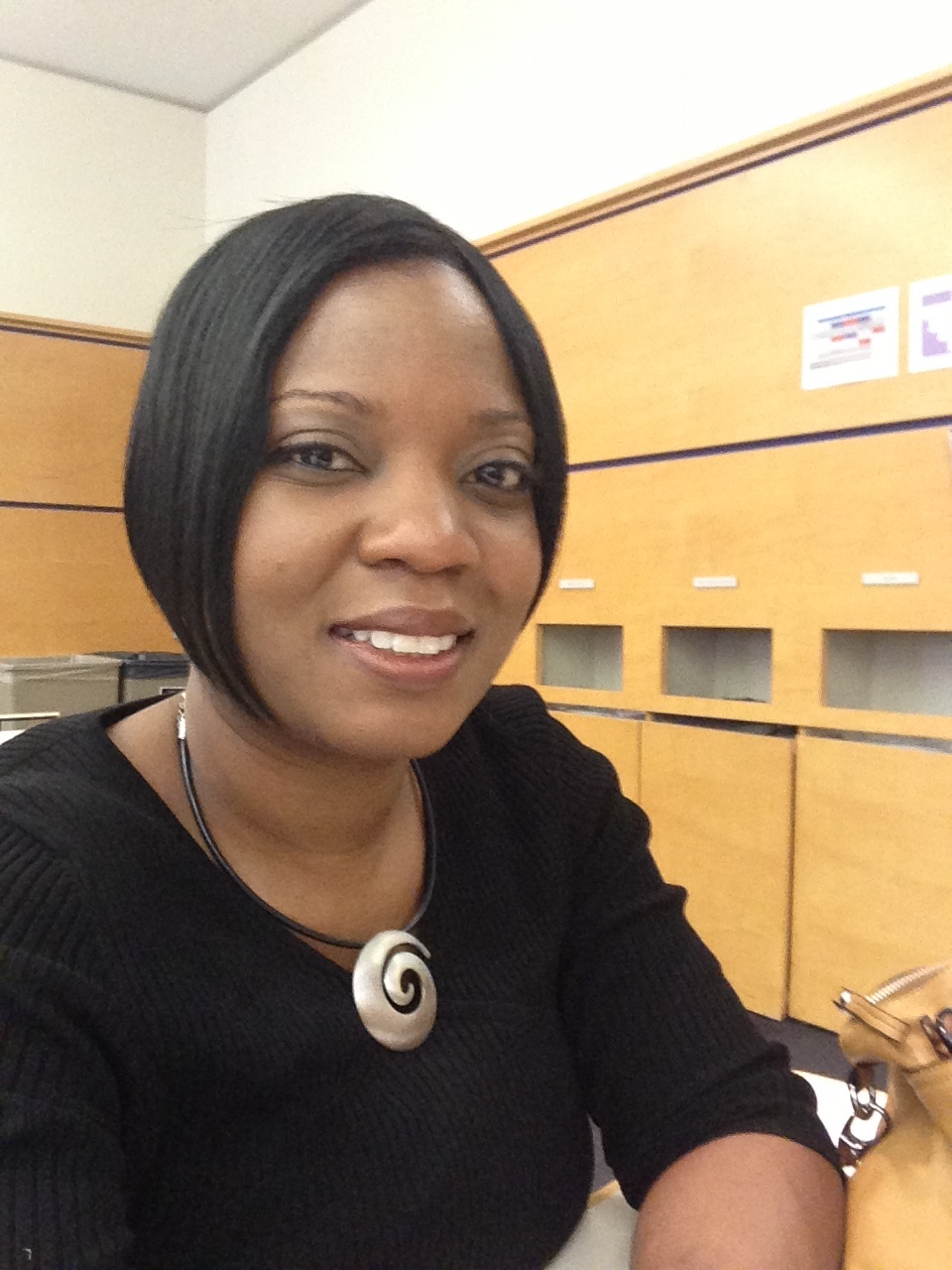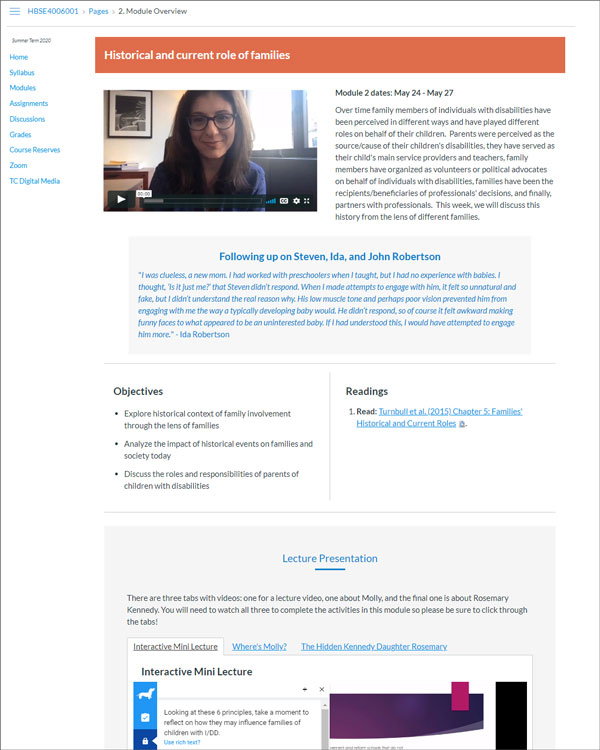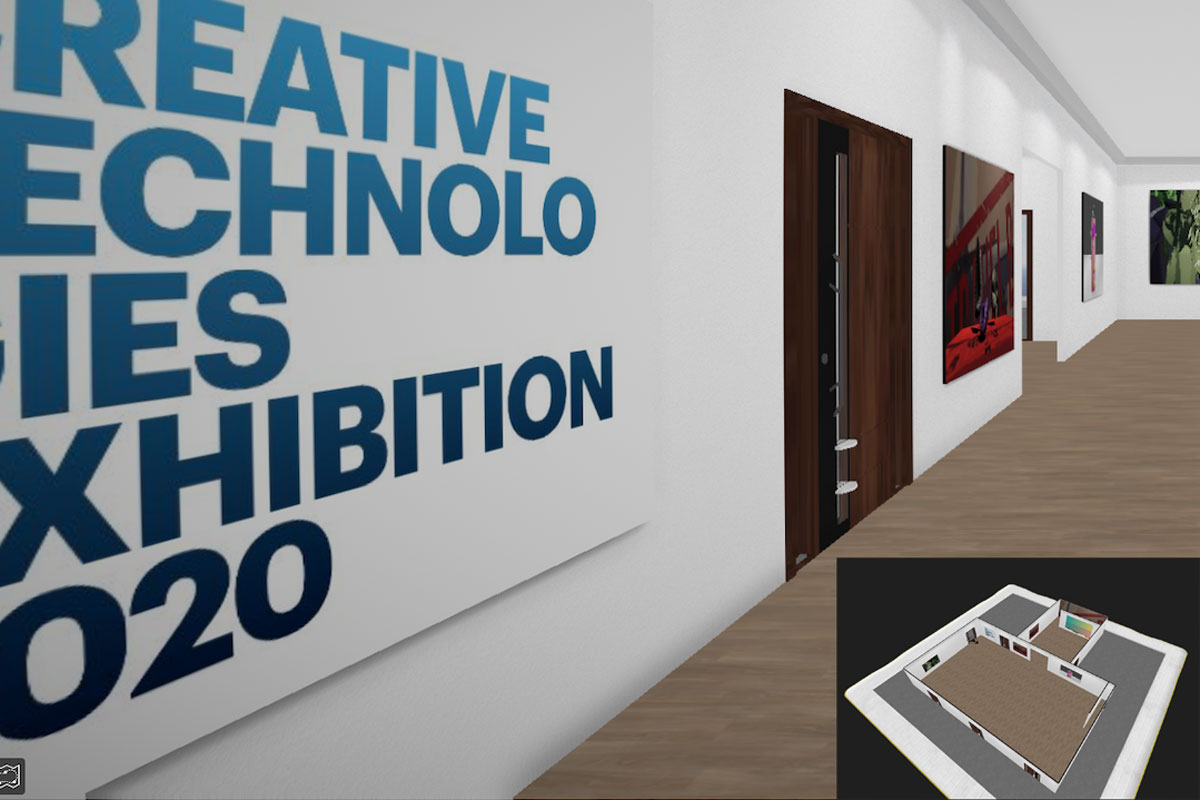It was Monday, March 2nd — just before spring break, with COVID cases on the rise in New York City — when Veronica Thomas got the question from TC President Thomas Bailey and Provost and Dean Stephanie Rowley: What would it take to move all of Teachers College’s courses online?
Say, in two weeks?
The question wasn’t hypothetical. Shortly afterward, Bailey would announce that the College was closing its campus for the remainder of spring semester. All faculty were told to ready themselves to teach via the internet upon returning from the break — which meant that Thomas, Interim Executive Director of the Office of Digital Learning (ODL), and her five-member team, would indeed have to ready all systems over the weekend and spend the break fielding emails and calls from anxious professors.
It was a movie-like moment, when the script undoubtedly would have called for someone to say, “OK, now we panic.” But Thomas, who earned her master’s degree in Instructional Technology and Media at TC, stayed calm.

READY FOR THE CALL Veronica Thomas wasn't fazed by the challenge of moving instruction online in two weeks. She credits her team and great advance planning at TC. (Photo: TC Archives)
“I have an incredible team of really talented, caring, and dedicated people,” she says. “And fortunately, we didn’t have to reinvent the wheel, because we’d been doing a lot of this work already on a smaller scale.”
Faculty who have worked with ODL since its creation four years ago knew what the group could do.
“Two years ago, we worked really hard with Veronica and ODL to create a fully online master’s degree program in Developmental Disabilities,” says Laudan Jahromi, Professor of Psychology & Education and Director of Programs in Intellectual Disability/Autism. “They’re extraordinarily creative in thinking about the content and goals for student learning and how to make an online format not just support but enhance the entire experience. Thinking through that program really prepared us for this crisis. So, when TC went remote, we basically told Veronica, ‘We know how urgently others need you, so don’t worry about us. We’ve got this.’”

TALK AMONGST YOURSELVES An online module from a course taught by Laudan Jahromi builds in space for student reflection and response. (Photo: TC Archives)
ODL’s “bedside manner” would prove as important as its technical skills.
“The psychological aspects of providing support are very important — because normally we have six months to plan a course, but now there was a fraction of the time with ten times the workload,” says Minh Le, ODL Educational Media Developer. “So a lot of faculty needed someone to get on a call and support them one on one.”
Richard Jochum, Associate Professor of Art & Art Education, who has turned to ODL to bring studio courses in painting and sculpture online, knew that need would be met. “Veronica and her team are absolute experts, but they are really gentle and never come at you and tell you what to do. They meet you on your own level to find out your goals, your needs, and your comfort level with technology. People don’t realize what great hands we’re in.”
Veronica and her team are absolute experts, but they are really gentle and never come at you and tell you what to do. They meet you on your own level to find out your goals, your needs, and your comfort level with technology. People don’t realize what great hands we’re in.
— Richard Jochum, Associate Professor, Art & Art Education
In record time, ODL more than validated that assessment, transferring all 775 spring course sections (those normally meeting in-person, on campus, at designated days and times), taught by 519 professors, adjuncts, lecturers and instructors and serving 5,572 students, to fully online instruction with nary a major glitch. Thomas was proud of her team’s response to the crisis, but she was quick to offer two disclaimers.
The first was to credit some very smart decisions made by TC long before the crisis hit.
“We were extremely fortunate that that the College had previously chosen Canvas as its learning management system [a software platform that enables the online administration and delivery of educational courses and other learning and development programs] and invested in a comprehensive contract with Zoom [the online video conferencing system that faculty have used for nearly all synchronous (live) teaching sessions],” Thomas says. “We also relied on the Advanced Technology Services team to provide the training and technical assistance that many faculty desperately needed.”
[Read a story on TC’s Office of Advanced Technology Services, which helped put these measures in place. Read "Nine Days in March," a recap of the College's rapidfire transition online.]
But even more important, Thomas says, the use of digital teaching tools at TC, whether online or in class, is still far from where ODL believes it can go. During the first throes of the crisis, Thomas and her group focused, for the most part, on simply getting all faculty to use Canvas and thus in some measure work online. The system is highly efficient in enabling instructors to put course materials in one place, announcements in another, and activities in yet another — but therein also lies the rub.
“Online learning has become defined by those buckets, and not as a cohesive experience,” Thomas says. “So, in the longer-term, we’re trying to help all instructors create online experiences that exceed the sum of their parts. And the crisis has really fast-forwarded that mission and pushed people to think about how TC is going to define this space. There’s real momentum around that now.”
Climbing a Different Ladder
Thomas, who joined TC three years ago after directing digital learning at Columbia Business School Executive Education, says that digital learning means something very different in academia than in the corporate world.
“Corporations have actually been ahead in using different technologies, but effectiveness has been a question mark,” she says. “What drew me to TC is that people here are experts in how to teach different kinds of subject matter and how to connect with different kinds of learners. You need to apply that kind of thinking to technology in order to ensure that there is a transfer and an application of the knowledge.”
What drew me to TC is that people here are experts in how to teach different kinds of subject matter and how to connect with different kinds of learners. You need to apply that kind of thinking to technology in order to ensure that there is a transfer and an application of the knowledge.
— Veronica Thomas, Director, Office of Digital Learning
The most important lesson she’s learned at TC, Thomas says, is that “online learning can’t be one size fits all, either for the instructors or the learners. We were exploring that before the crisis and asking, how do we create an online experience that is uniquely TC’s? That isn’t defined by me or by the Office of Digital Learning, but as a collaborative process?”
Typically, that process starts with the ODL team asking faculty members what they want students to take away from a course and recommending a sharper focus on course presentation.

THE ODL TEAM Left to right: Minh Le, Educational Media Developer; Nafiza Akter, Educational Technologist; Rochelle Thomas, Associate Director; Ken Moy, Coordinator (Photos: TC Archives)
“We want faculty to think about creating context for content,” Thomas says. “So instead of just listing out course information, the professor creates a user experience that helps students understand how everything relates to the central ideas and goals of the course.”
For example, a course site might employ visual imagery, structured in accordance with a course overview; a snapshot approach to key topics and learning questions; and perhaps even some useful background information about the instructor.
“There’s an inviting home page that gets you to specific units or weeks,” Thomas says. “You don’t have to scroll through a whole long line of indexed content — instead you can easily jump to sub-pages that focus on one particular unit.”
Within each unit, there’s likely to be all the usual materials — readings, assigned writings, videos — but also, again, a greater sense of context.
“The idea is to make it clear to students why you’re asking them to read these particular articles or watch this particular video,” Thomas says. “Why is this essential to this lesson? It takes extra effort, but otherwise you’re leaving it up to the student to make connections, and while that has value, you have to remember that a lot of it is new to the student.”
Of course, the course site is just the gateway to the actual course experience. In thinking about how faculty can create better online experiences, Thomas and the ODL team use a framework that roughly parallels the “SAMR” model (Substitution, Augmentation, Modification, and Redefinition) outlined by the EdTech consultant Ruben Puentedura.
Most newcomers to teaching online begin with a deficit mindset — “what can’t I do?” — focusing chiefly on how to substitute for, or approximate, what they usually do in the classroom. In many instances, they are right to do so — for example, a professor explaining how to use a piece of technology or demonstrating how to use a formula or equation needs students to be able to see, as clearly as possible. The online solution: A document camera that can zero in on the procedure or information.
The psychological aspects of providing support are very important — because normally we have six months to plan a course, but now there was a fraction of the time with ten times the workload. So a lot of faculty needed someone to get on a call and support them one on one.
— Minh Le, ODL Educational Media Developer
But in other instances, for a variety of reasons, using a camera to talk to live viewers is far from ideal. For example, since the crisis began, many of TC’s international students have returned home, often to countries in far-distant time zones. To spare them from having to tune in at 5 a.m. to evening classes New York City, most faculty are now teaching “asynchronously,” meaning that classes are not live and students can absorb course information on their own time.
But that, the ODL team strenuously argues, should just be the starting point. And that’s where the “augmentation,” “modification” and — for those who really take command of the medium — “redefinition” in the SAMR model come into play.

VISUALIZING THE DATA In a doctoral-level course, Haeny Yoon, Assistant Professor in Curriculum & Teaching, urges students to use poetic, artistic and multimodal techniques for visualizing data, revisiting the iconic “Daisy” ads from the 1960s to examine how children are imagined and “used” for political gain. (Photo: TC Archives)
“‘Asynchronous’ shouldn’t mean just throwing your syllabus online and pre-recording some lectures,” says Nafiza Akter, ODL Educational Technologist. “It can mean enabling students to reflect before class or leaving a space after discussion for students to talk with each other, which is especially important at TC, because dialectics is such a big part of how we teach.”
There is an array of established and newer technologies for promoting interactivity, Akter says — tools such as Flipgrid, a platform for video discussion; VoiceThread and Padlet, virtual bulletin boards that enable postings of text, videos and other formats with chat functionality for group brainstorming; PlayPosit, which enables the instructor to upload videos from YouTube, Vimeo and other sources, annotated with learning objectives, and solicit answers — which the instructor will see — to questions of various kinds (multiple choice, free response, reflective pause); and Mediathread, which students can use to create “multimedia essays” that blend writing and video.
‘Asynchronous’ shouldn’t mean just throwing your syllabus online and pre-recording some lectures, It can mean enabling students to reflect before class or leaving a space after discussion for students to talk with each other, which is especially important at TC, because dialectics is such a big part of how we teach.
— Nafiza Akter, ODL Educational Technologist
When used to supplement live, on-campus teaching, all of these tools facilitate what’s called the “flipped classroom,” whereby instruction that used to occur in class takes place at home, freeing up classroom time for working through problems and applying concepts through team projects.
When all teaching is done remotely, the flipped classroom model becomes almost indispensable, argue Akter and Le. “The last thing we want is for students to forget the ideas and questions they may have in the moment,” Akter says. “We want them to speak up while those ideas are fresh in their minds.”
So, what does asynchronous, flipped instruction look like in practice?
Click here to read five case examples of how, with ODL’s assistance, TC faculty members have taken a dramatically different approach to teaching online.
— Joe Levine

